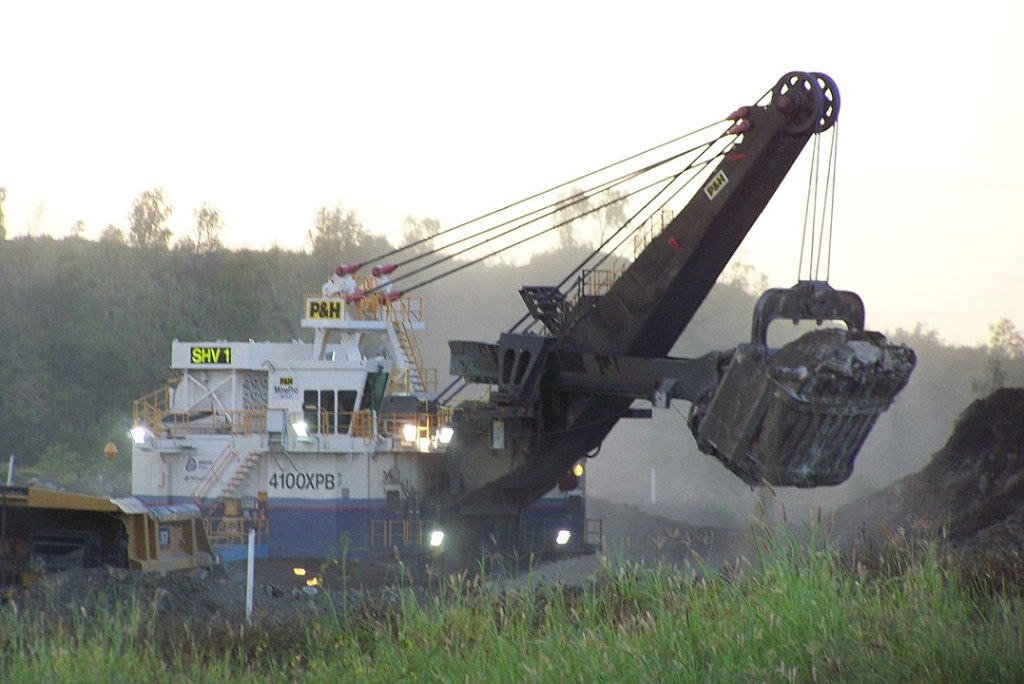This is a half serious text – no heavy geological facts and summary at all today!
When I wrote about the latest Investors Summary of ScandiVanadium it struck me how simple the planned Alum shale mining process is communicated. The figure gives the impression that all is nice and clean and that land areas can easily be restored again. The shale is dug out, transported to a processing plant, cleaned and dried and then used as a filling together with the overburden (i.e. rock and sediments above the Dictyonema shale). And voilà – farmers will be able to reuse the site and their land. This cartoon is quite in contrast to what a mine looks like.

The company also writes that “Vanadium ore dug by shovel and hauled to process plant where metals are cleaned from the rock”. Shovel? Cleaning of metals? Did I really understand this correctly? Is ScandiVanadium planning to dig the Alum shale with a shovel? Or does ‘shovel’ have different meanings? And how is the rock cleaned of metals?
First I consulted Wikipedia to see what meaning the word ‘shovel’ actually has. Wikipedia tells me that “Most shovels are hand tools … The term shovel also applies to larger excavating machines called power shovels, which serve the same purpose—digging, lifting, and moving material”. A similar definition can be found in the Cambridge dictionary: “tool consisting of a wide, square metal or plastic blade attached to a handle for moving loose material” … “a similar part on a large machine for picking up and holding loose material”. Probably ScandiVanadium refers to the latter – a large machine, a so-called power shovel, that will dig out the Alum shale. But what exactly is a power shovel? Back to Wikipedia to find out more about power shovels. Here I learn that power shovels are used for excavating and for removing overburden in open-pit mining. So, this is what ScandiVanadium meant! And below is a picture of what a power shovel can look like.

Picture by Sansumaria at English Wikipedia, CC BY-SA 3.0
https://commons.wikimedia.org/w/index.php?curid=4590950
But where is the process plant on the picture? The place where the rock is cleaned of metals? I continued my search for ‘Process plant’ and found a web side hosted by the Geological Survey of Sweden (SGU) with a series of six lectures (ITP308) that deal with different aspects of mining. The purpose of the lecture series is to “reduce knowledge gaps between authorities and industry and to make information about mining and the environment readily available to all stakeholders”. The lecture series is informative, easy to read and can be recommended to everyone wanting to know more about mining in general. Here is the link to the Introduction page from where you can navigate to all lecture series.
Lecture 1 is an Introduction to Minerals, Ore and Exploration. Lecture 2 an Introduction to Mining and provides a very different picture from that shown in the above figure by ScandiVanadium. Just don’t watch the video, which is an advertisement for a mining company.
Lecture 3 deals with Mining and the Environment, Lecture 4 with Mining Waste and Lecture 5 with sulphide minerals and acid rock drainage. What is described in Lecture 5 could actually apply to a future mine in the Alum shale, i.e. leakage of toxic metals at low pH. However, as has been shown in the literature, both a low pH and a high pH affect leakage of toxic elements from the Alum shale. Maybe one could add these observations in Lecture 5? The final Lecture 6 addresses Governance of Extractive Industries. So all in all an informative lecture series.

